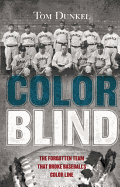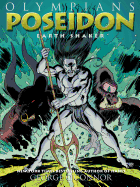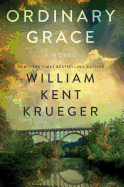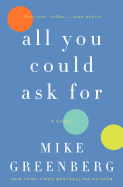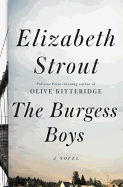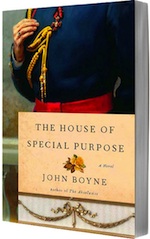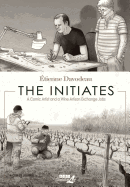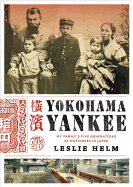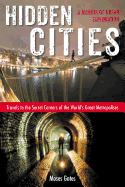Tuesday, April 2, 2013
March Madness still has a week to go, and yet.... Opening Day is here. Thrilling for baseball fans, and for aficionados of baseball literature--there's a bounty of new books, many historical. As Don DeLillo wrote, it is "the deep eros of memory that separates baseball from other sports."
Color Blind: The Forgotten Team That Broke Baseball's Color Line by Tom Dunkel (Atlantic Monthly Press, $25). See our review below.
Baseball as a Road to God: Seeing Beyond the Game by John Sexton (Gotham Books, $27.50). The president of New York University uses baseball in a popular course, teaching that we can touch the spiritual dimension of life through the game.
The Victory Season: The End of World War II and the Birth of Baseball's Golden Age by Robert Weintraub (Little, Brown, $27.99). How baseball helped the U.S. rally after World War II.
Nailed!: The Improbable Rise and Spectacular Fall of Lenny Dykstra by Christopher Frankie (Running Press, $25). The former Mets and Phillies player hung out with Charlie Sheen. Enough said.
Pitching in a Pinch: Baseball from the Inside by Christy Mathewson (Penguin Classics, $15 paper). First published more than 100 years ago, by one of the dominant pitchers in the history of the game.
The Summer of Beer and Whiskey: How Brewers, Barkeeps, Rowdies, Immigrants, and a Wild Pennant Fight Made Baseball America's Game by Edward Achorn (Public Affairs, $26.99) Chris Von der Ahe risked his life's savings to found the St. Louis Browns in order to sell more beer.
501 Baseball Books Fans Must Read before They Die by Ron Kaplan (University of Nebraska Press, $24.95 trade paper). A definitive list, though Kaplan left out a favorite: Baseball Haiku.
So You Think You Know Baseball?: A Fan's Guide to the Official Rules by Peter E. Meltzer (Norton, $16.95 trade paper). An attorney and long-suffering Phillies fan is obsessed and entertaining.
Wherever I Wind Up: My Quest for Truth, Authenticity, and the Perfect Knuckleball by R.A. Dickey (Plume, $17 trade paper). Now in paperback, "the finest piece of baseball writing since Ball Four," according to Sports Illustrated. --Marilyn Dahl, editor, Shelf Awareness for Readers
The Iron King
by Maurice Druon, transl. by Humphrey Hare
The Iron King, first published in 1955, is the first of seven historical novels in Maurice Druon's Accursed Kings series. English translations have long been out of print and difficult to find, and the seventh has never been translated from Druon's native French. A new edition, featuring the accolades of Game of Thrones creator George R.R. Martin, will introduce a new generation to Druon's intriguing work.
The Iron King follows the political machinations and social upheavals during the last year in the reign of Philip IV, also called Philip the Fair, in early 14th-century France. Philip's successful destruction of the Knights Templar sees Grandmaster Jacques de Molay burned for heresy in the heart of Paris. With his final breath, the defiant Molay curses his adversaries, summoning both Philip and the pope, Clement V, to the "Tribunal of Heaven" within a year. Watching from the nearby Tower of Love are two of the king's daughters-in-law, each embracing their adulterous lovers. This storm of familial and political troubles ultimately leads to the Hundred Years' War and, in the nearer term, disaster among the French nobility.
Druon's prose, as translated by Humphrey Hare, is elegant in establishing the historical surroundings and succinct when portraying action. Frequent endnotes lead to an appendix explaining some of the more esoteric references. Readers will swiftly plunge deep into the schemes of nobles and bankers, and the ultimate flaw in The Iron King is that it ends before many of its plotlines can conclude or even reach fruition. The next Accursed Kings novel, The Strangled Queen, cannot come soon enough. --Tobias Mutter, freelance reviewer
Discover: The triumphant re-release of a classic French historical fiction series.
Ordinary Grace
by William Kent Krueger
Ordinary Grace, an extraordinary coming-of-age novel set in a rural Minnesotan town in the summer of 1961, is a literary departure from William Kent Krueger, the author of the Cork O'Connor mysteries (Trickster's Point, Northwest Angle, et al.), although there are still deaths and mysteries--and even a murder.
The Washington Senators have relocated to Minnesota and are enjoying their first season as the Twins, their exploits bruited about New Bremen from the barber shop to the corner drugstore. All such talk is trumped, however, when a boy is killed while sitting on the railroad tracks.
Frank Drum is the 13-year-old narrator of the story. Along with his brother, Jake, two years younger and cursed with a bad stutter, they are part of the family that is central to all that takes place. Frank's father is a Methodist minister, a gentle and forgiving man. His wife is artistic, not at all thrilled that the lawyer she married decided to become a small-town minister. She has cast all her thwarted hopes and dreams on their 18-year-old daughter, Ariel, a gifted musician headed for Juilliard.
The boys discover the body of an itinerant by the tracks--the second death of the summer, with more to follow. At the same time, they meet Warren Redstone, who weaves in and out of the rest of the novel, with Frank prejudging, accusing and ultimately forgiving him.
Ordinary Grace is shot through with faith, hope and forgiveness. Krueger has written a moving story, replete with authentic characters who grow in wisdom and grace. --Valerie Ryan, Cannon Beach Book Company, Ore.
Discover: A mystery writer shifts gears with a coming-of-age story set in a small Minnesota River Valley community, where a family is tested in ways it could never have imagined.
All You Could Ask For
by Mike Greenberg
Mike Greenberg, the king of sports talk radio, has written a debut novel. There are no All-Pro linemen, Hall of Fame pitchers or towering centers in All You Could Ask For. Instead, there are women: Brooke is a happily married, stay-at-home mom of twins in her late 30s who was raised to be a "proper" lady. Samantha, a newlywed in her late 20s, discovers during her honeymoon that her husband is cheating on her. Katherine, a powerful Wall Street businesswoman, is celebrating her 40th birthday and trying to figure out what makes life worth living.
The three are living completely separate lives until a life-changing event crashes down on each of them. Greenberg alternates deftly between each of their perspectives, giving readers a bird's-eye view into their thoughts and rationales. Their voices are authentic and strong.
At times, the prose seems to reflect the characters' internal thoughts, but at other times they seem to be talking directly to the reader. The second-person point of view can feel awkward, though; there's no indication why the character would be aware of the reader. Still, the book takes on a very personal tone that draws the reader into the women's lives.
All You Could Ask For is all you could ask for in a reading experience. Greenberg balances humor with heartbreak. He surprises and inspires; deals out hope and despair. Throw away all your preconceived notions about what "woman's fiction" is supposed to be. Mike Greenberg just broke the mold. --Jen Forbus of Jen's Book Thoughts
Discover: Three women set out to discover what makes life worth living and along the way discover just how strong the bonds of friendship can be.
The Burgess Boys
by Elizabeth Strout
Almost five years after winning a Pulitzer for the linked stories of Olive Kittredge, Elizabeth Strout returns to her native Maine in The Burgess Boys, a novel about a family scarred by their father's death under the wheels of the family car--accidentally set in motion by one of his children playing with the gear shift. The oldest Burgess son, Jim, flees the small town of Shirley Falls for a fashionable Brooklyn brownstone and a white-shoe Manhattan law firm, while his younger brother, Bob, lives in a small nearby apartment and grinds out briefs in a Legal Aid office. Only Bob's twin sister, Susan, remains in Maine to raise her son, Zachary, a reclusive teen whose father ran off to discover his heritage in Sweden.
One day Zach inexplicably throws a frozen pig's head into the storefront mosque serving Shirley Falls's growing community of Somali refugees. When outraged church leaders and social workers join federal hate crime prosecutors and raise the profile of the case, a panicked Susan calls Jim, and he returns (with Bob) for an uncomfortable family reunion.
Strout moves her story easily among the complicated lives of the Burgess children. The town's displaced Somali community, with its own broken families and internal politics, provides an apt metaphor for the domestic drama in the Burgess family. Strout has already exhibited a sharp eye for the details of small-town Maine; in The Burgess Boys, she shows an equally deft touch in dissecting the fixations of Brooklyn's gentrifying classes--yet she doesn't judge their foodie obsessions or sexual dalliances. --Bruce Jacobs, founding partner, Watermark Books & Cafe, Wichita, Kan.
Discover: Strout moves easily between Maine and Brooklyn, N.Y., as she traces the unraveling of a fragile sibling relationship.
The House of Special Purpose
by John Boyne
In The House of Special Purpose, John Boyne (The Absolutist) once again takes readers into the turbulent time period of World War I with an ornately scripted and often heart-pounding vision of the fall of czarist Russia.
In 1981, we meet Georgy Jachmenev, an elderly Russian émigré whose beloved wife, Zoya, is dying of ovarian cancer in a London hospital. As he hopes against hope for her recovery, Georgy's thoughts meander back through the best and worst years of their long marriage--always "GeorgyandZoya," never Georgy and Zoya--to his earlier years in Russia, a life so different from the one he has shared with his wife that it seems to belong to another person entirely.
As a teenage peasant in imperial Russia, Georgy's impetuous and dramatically heroic interruption of an assassination attempt saved the life of a Russian nobleman and catapulted him into the court of Nicholas II, the last tsar of Russia. Georgy recounts leaving his sisters and abusive father behind to become the companion and bodyguard to the 10-year-old Tsarevich Alexei. At first dazzled by the extravagant wealth of the Romanov family, Georgy quickly finds a distraction, consumed by thoughts of his first sweetheart, the Grand Duchess Anastasia. However, neither loyalty nor love can halt the terrible march of history. Even if Georgy can avoid the machinations of the treacherous Rasputin, who sees Georgy as a tool to influence the next tsar, the Bolshevist Revolution looms on the horizon, ready to rob him of his love, livelihood and innocence.
Boyne creates a series of events so intricate and realistic that it is difficult to remember one is reading historical fiction and not the memoir of an ordinary yet thoroughly honorable man. While his hardscrabble peasant life, lack of education and youth make the teenaged Georgy as naive as Bruno from Boyne’s The Boy in the Striped Pajamas, he is by nature honest, steadfast and intelligent. While his pride and adolescent need to belong occasionally lead him astray, his foibles are relatable, and Boyne shows us how Georgy matures through decades marked as much by tragedy and grief as by love and family.
While Nicholas II's reign was hardly blameless or bloodless, Boyne heightens readers' sympathies for the doomed Romanovs by focusing on their family dynamic. Imperious and cold though the tsaritsa may be toward servants, her protective instincts toward her hemophiliac son give her the same passion as any mother with an endangered child. Georgy, raised to believe in the tsar's divine right, never focuses on the less savory aspects of the tsar's reign, seeing instead a tired, fatherly ruler trying to remain stalwart in the face of overthrow and execution. Most importantly, the romance between Georgy and Anastasia infuses the story with simple tenderness as the young couple discover the innocent thrill of touching hands and meeting in secret to steal chaste kisses. While the first love angle is bittersweet due to the sheer impossibility of a happily ever after, readers will find their sympathies belong completely to the young lovers.
Scenes from various phases of Georgy's marriage to Zoya are equally affecting as Georgy proves that his early experiences forged the strength and loyalty necessary to bind him to his wife in the face of deep personal rifts--and even death itself. Though he walks a thorny path, Georgy's life story brims with adventure, history, loss and his unfailing hope for a better ending to every story. A testament to human will in the face of adversity, Boyne's narrative will break a tiny piece of your heart one moment and bring a triumphant smile to your face the next. As enthralling and intricate as a Faberge egg, The House of Special Purpose is a rare treasure readers will savor. --Jaclyn Fulwood
Graphic Books
The Initiates: A Comic Artist and a Wine Artisan Exchange Jobs
by Etienne Davodeau
Richard Leroy and Etienne Davodeau, two men in their 40s living in France, come to appreciate their differing, but remarkably similar, viewpoints on the creation of art when they exchange jobs and engage in a spirited discussion of ideas in Davodeau's quiet, philosophical graphic novel, The Initiates.
The story begins in Leroy's Montbenault vineyard, as he shows Davodeau the basics of pruning grapes. Through four seasons, as Leroy educates Davodeau about the art of winemaking, Davodeau develops Leroy's sensibilities in the area of comics. Leroy views wine as the link between earth and man--and his vineyard as another living, breathing incarnation of himself. Davodeau has trouble grasping this "living" concept initially, but through energetic discourses about art, comics and wine with his "master"--and a nose-to-the-ground crash course in wine-growing--he begins to appreciate the analogies between the two seemingly dichotomous professions.
In one beautifully rendered scene, this understanding is brought to fruition when Leroy equates barrel-making to book-printing; both wine and novel must leave the inventor's hands and become dependent on others for its final output. Later, as Davodeau sits at his drafting table completing a drawing with Leroy looking over his shoulder, Leroy ties the "art" arising from Davodeau's fingers to the manual "artistry"--pruning, weeding, feeding, plowing--required to bring the vineyard to full bloom.
Davodeau's lines are clean and economically sparse, but powerful enough to forge the bonds that tie both professions together. He concludes that books, like wine, bring people together and cultivate new friendships based on mutual understanding. --Nancy Powell, freelance writer and technical consultant
Discover: A philosophical graphic novel examines how friendship, winemaking and the creative exchange of ideas can bring people closer together.
Biography & Memoir
Lifesaving Lessons: Notes from an Accidental Mother
by Linda Greenlaw
Linda Greenlaw's identity was tied to her island home. As a fishing boat captain and an author (The Lobster Chronicles), she writes in Lifesaving Lessons, she "longed for home while at sea as much as [she] longed for the sea while at home." Although her list of friends was small, her relationship with a man tenuous, she was relatively happy. Little did she know how hiring quiet, hardworking 15-year-old Mariah to work on her boat one summer would change her insular life. When Greenlaw learned that Mariah was a victim of pedophilia, she reacted instinctively, taking Mariah into her home and heart and becoming the abused girl's legal guardian.
The sudden flood of maternal, protective feelings caught Greenlaw off-guard. "I had been struggling for some time with the seemingly contradictory impulses of pulls from the sea and shore, and trying to find the right balance," she admits. "Mariah's presence in my life made finding it that much more difficult. I was never so tempted to hop aboard a boat and leave my troubles behind as I always had as I was now." With frankness, Greenlaw describes the emotional turmoil of the next three years as ward and guardian navigated the oftentimes rough waters of their new life together. Greenlaw was determined to make her new life as a parent work, however, and Lifesaving Lessons is a heartwarming testament to the tenacity of one woman to make a difference in the life of a child. --Lee E. Cart, freelance writer and book reviewer
Discover: An engrossing memoir of one woman's determination to help an abused girl, by the swordfish boat captain made famous in The Perfect Storm.
Yokohama Yankee: My Family's Five Generations as Outsiders in Japan
by Leslie Helm
Born in Yokohama, Leslie Helm found himself a gaijin, or foreigner, growing up as an outsider in both Japan and the United States, straddling two cultural identities without belonging to either one. This identity crisis, and the challenges of raising adopted Japanese children with his wife in an outwardly looking Caucasian home, ultimately prompted the Los Angeles Times correspondent to rediscover his family's roots.
Yokohama Yankee traces five generations of Helm's family in Japan, starting with his German great-grandfather Julius' immigration to Yokohama in 1869. Julius and his Japanese wife, Hiro, had eight children, many who would go on to influence and steer the powerful Helm Brothers company through pivotal moments in Yokohama's history. Increasingly insular and xenophobic policies enacted by the Japanese during World War II resulted in the family's ultimate rejection of their Asian heritage, seeking to avoid both Japanese political prisoner camps and U.S. internment camps.
Helm draws upon his great grandfather's unpublished memoir and primary source material from the Japanese government archives, personal letters, artifacts and interviews with surviving employees of Helm Brothers and family members to bring his poignant and heartbreaking homecoming to life. Through his research and his relationships with the Japanese people, Helm comes to view Japan not as the isolationist country of his foreign correspondent days, but as the warm, embracing presence that welcomed a German outsider and helped him succeed beyond the strictest of racial and political constraints. --Nancy Powell, freelance writer and technical consultant
Discover: A native son's personal odyssey to reclaim his interracial roots across three continents, four countries and five generations.
We'll Be the Last Ones to Let You Down: Memoir of a Gravedigger's Daughter
by Rachael Hanel
For Rachael Hanel, death is business, the cycle of life. With We'll Be the Last Ones to Let You Down, a girl "who grew up in cemeteries" and "ran around the necropolis, the city of the dead, taking in the fresh air, living and breathing and laughing as those below me no longer could" has written a humorously heartbreaking, philosophically engaging, intellectually stimulating and spiritual story that reads like a slap in the face--poignant, brooding yet ever hopeful. It is a tale of childhood innocence lost and found, of relationships fractured and reformed, of faith and recovery.
Hanel's memoir revolves around her father, a farm laborer turned gravedigger who adopts the name Digger O'Dell. Death becomes a daily ritual, and young Rachael weaves in and out of burial plots with the exuberance and innocence of youth; by adolescence, death has become less mysterious and more tangible, prompting Hanel to build a defensive mental wall around it. Hanel is 11 when her father purchases the family gravestone and 15 when he dies suddenly. In death, she finally understands the gravity of sorrow and grief, "the part the story left out."
Hanel takes readers on a transformative journey that weaves together her Catholic faith with the burdens that death leaves behind, adeptly handling a subject many still consider taboo. Any reader will be thankful for the naked honesty and craft they encounter in this fine memoir. --Nancy Powell, freelance writer and technical consultant
Discover: A life built on death, as a gravedigger's daughter survives and thrives on the family business.
Sports
Color Blind: The Forgotten Team That Broke Baseball's Color Line
by Tom Dunkel
Nothing quite matches minor league baseball for reflecting the historical ambience of small-town America--unless it's the even smaller town version known as "semi-pro." Journalist Tom Dunkel taps the semi-pro mother lode in his first book, Color Blind, as he captures the bizarre history of the Bismarck Churchills, the first integrated professional baseball team.
Bismarck, N.Dak., is the last place one might expect Alabama-born Satchel Paige to hang his glove, but he was lured to the city that William Clark (of Lewis & Clark) described as "more cold than I thought possible for man to endure" by the checkbook of Neil Churchill, a local car dealer and former ballplayer. Churchill liked to win, and if that meant the stars from the Negro League, he was unafraid of racial fallout. He knew that if he fielded a winning team, the fans would come.
Churchill first recruited catcher Quincy Troupe as a way to entice Paige, then signed power hitter Charles "Red" Haley, followed by two white sluggers, "Beef" Ringhofer and "Sock" Johnson. When he persuaded talented pitcher/catcher Ted "Double-Duty" Radcliffe to join his team in 1935, he had the whole package. Bismarck closed the season by winning the first semi-pro national tournament in front of an overflow crowd in racially sensitive Wichita, Kan., where local sportswriters struggled to describe the superiority of the team's "colored boys." Full of colorful baseball lore, as well as social commentary, Color Blind is both first-rate history and an entertaining underdog sports story. --Bruce Jacobs, founding partner, Watermark Books & Cafe, Wichita, Kan.
Discover: The entertaining story of the Bismarck Churchills, which became the first racially integrated professional baseball team, more than a decade before the Brooklyn Dodgers.
Travel Literature
Hidden Cities: Travels to the Secret Corners of the World's Great Metropolises─A Memoir of Urban Exploration
by Moses Gates
Moses Gates is no ordinary traveler, nor is he a typical memoirist. Hidden Cities is a recollection of his urban explorations in the greatest cities of the world over a 10-year period. It begins in New York City, as Gates moves in with the woman he would soon marry. In love with his new home and his new wife, he enrolls in graduate school for urban planning and starts poking around old subway tracks, abandoned observation decks and massive bridges.
While Gates's passion for urban exploration grows, his marriage suffers; after his divorce, he's free to expand his adventures to other cities. He descends to the catacombs beneath Paris and a limestone quarry under Odessa, climbs to the bell tower of Notre Dame, travels along one of London's "lost" rivers, explores the underground of Naples and tours an abandoned coffee baron's mansion in Sao Paulo. The accounts of these journeys are often accompanied by historical facts and intriguing profiles of the fellow urban explorers he meets along the way, and the occasional documentation of the artwork Gates finds in the most unexpected of places is also wonderfully surprising.
Gates's travelogue does more than introduce the reader to the gritty undergrounds and highest climbing spots of the world's greatest cities--Hidden Cities ultimately celebrates the urban history and architectural evolution of mankind. For those of us who will never get to experience such places, Gates is a perfect travel companion. --Roni K. Devlin, owner, Literary Life Bookstore
Discover: A travel memoir of risky (often illegal) explorations of the hidden undergrounds and highest climbing points within the world's greatest cities.
Children's & Young Adult
Poseidon: Earth Shaker
by George O'Connor
This fifth book in the Olympians series from author-artist George O'Connor lives up to the exceedingly high standards he set with his launch title, Zeus. Each entry stands alone, but O'Connor also rewards fans of the series with references that allow connections between the Olympians' stories.
Here he begins, "The war against the first gods, the Titans, had just ended." Readers who've been with O'Connor since the beginning will get the reference to Zeus, and those just entering the series need no further explanation as Poseidon begins his narrative. An opening sequence of panel illustrations establishes Poseidon's power over the seas, and his hatred for Odysseus because he blinded Poseidon's son. O'Connor uses his palette and panel layouts to clearly delineate past and present, when Poseidon flashes back to the story of each of his offspring's birth. A central thread involves his child with Aethra of Troezen, Theseus. Poseidon tells the legend of the Minotaur (and connects it back to Hera's story). Expanding images cleverly lay out Theseus's impossible task of surviving the labyrinth, were it not for some key tools from Ariadne (a sword and spool of thread). O'Connor riffs on this visual motif with a series of vertical panels that brilliantly conveys the shift of power from the Minotaur to Theseus in their climactic conflict.
Detailed endnotes help readers connect other references between Poseidon's story and other entries in the cartoonist's tales of the Olympians. A suspenseful, gripping addition to a stellar series. --Jennifer M. Brown, children's editor, Shelf Awareness
Discover: The story of Poseidon, the latest stellar addition to George O'Connor's comics-style approach to the Olympians.
The Museum
by Susan Verde, illus. by Peter H. Reynolds
This playful picture book pays tribute to the joyous effect art can have on the viewer.
The endpapers give a hint of the fine art to follow. Eggplant-colored watercolors suggest works by Van Gogh, da Vinci and Picasso, among others. Then, emulating the style that he established with The Dot, Peter H. Reynolds strips away all but the girl and the art that inspires her. "When I see a work of art, something happens in my heart," begins the text, in rhyming couplets, by debut author Susan Verde. He puts the girl in a spin when faced with Van Gogh's Starry Night ("Now I'm all twirly-whirly, twinkly, sparkly, super swirly"). Rodin's sculpture "The Thinker" causes the heroine to ape his pose ("Hmmm... I think I'll analyze the whos and whats and wheres and whys"). Author and artist vary the moods for humorous effect, too. The heroine skips past a trio of floral landscapes--"Fragrant, soft, and so delightful"--and winds up in front of Munch's "The Scream"--"Suddenly, it's all so frightful!"
The climax occurs in front of a giant empty canvas that dwarfs the girl: "Is this a joke? I shut my eyes, and something happens, to my surprise." She sees elements from some of the previous paintings, then realizes she can fill her own canvas. It's the best kind of inspiration, a call to creative action. The only thing missing is a key to the artwork the heroine has witnessed, to allow children to explore more from the artists previewed here. --Jennifer M. Brown, children's editor, Shelf Awareness
Discover: An energetic girl who demonstrates the power of artwork through her joyful responses.



